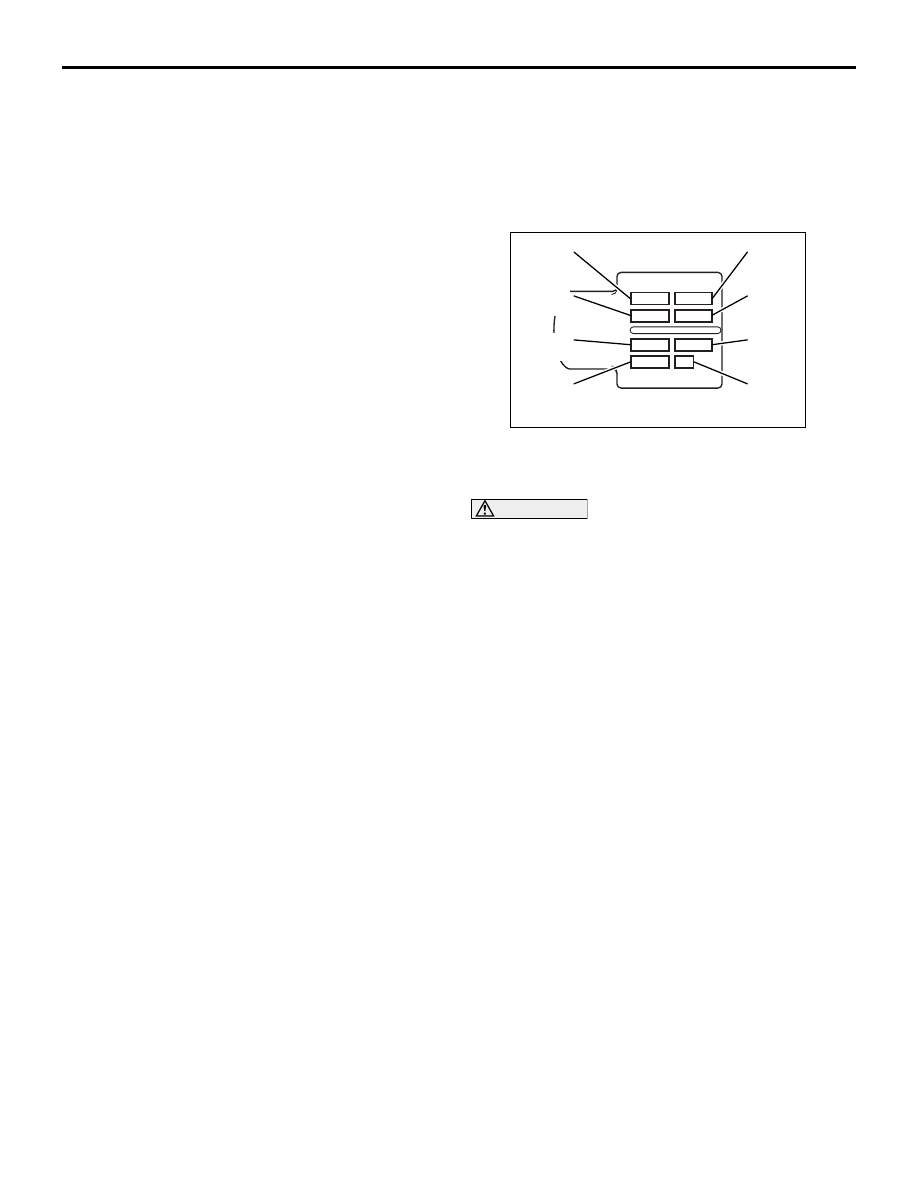Mitsubishi L200. Manual - part 12

PRECAUTIONS BEFORE SERVICE
GENERAL
00-44
For this reason, when the injector or engine-ECU is
replaced, injector correction data must be registered
afterwards in the engine-ECU using the Multi Use
Tester III (M.U.T.-III).
Correction data is converted into an identification
code consisting of 30 alphanumeric characters and
printed on the injector connector.
REGISTRATION PROCEDURE
1. When replacing the engine-ECU, connect the
current engine-ECU to the body harness.
NOTE: This operation is purposed to read the injec-
tor identification code stored in the engine-ECU.
Reading the identification code in this way before
replacement can eliminate manual input of the identi-
fication code after replacement.
2. After the ignition switch is in "LOCK" (OFF)
position, connect the M.U.T.-III to the diagnosis
connector.
3. Turn the ignition switch to "ON" position.
4. Select SPECIAL FUNCTION from the function
menu.
5. When the current engine-ECU is still mounted,
read and register the injector identification code
as follows:
(1) Select Read Injector ID Code (for engine-ECU
replacement) from the SPECIAL FUNCTION
menu.
(2) Select Write and Save Injector ID Code from
the menu to read data from the current engine-
ECU and save the data if it could be read
normally.
(3) Mount the new engine-ECU on the vehicle.
(4) Select SPECIAL FUNCTION from the function
menu.
(5) Select Write Injector ID Code (for engine-ECU
replacement) from the SPECIAL FUNCTION
menu.
(6) Select SAVED INJECTOR ID WRITING from
the Write Injector ID Code menu to write the
data, which was saved previously, to the
engine-ECU.
6. If the injector has been replaced or data has not
been read from the current engine-ECU, register
the injector identification code as follows:
(1) Select Write Injector ID Code from the
SPECIAL FUNCTION menu.
(2) If the injector was replaced, specify whether to
write to every cylinder or a specific cylinder.
AK501492
Frame 1
(4 digits)
Frame 3
(4 digits)
Frame 5
(4 digits)
Frame 7
(4 digits)
Frame 2
(4 digits)
Frame 4
(4 digits)
Frame 6
(4 digits)
Frame 8
(2 digits)
AB
(3) Select the write mode from the menu, enter
the identification code printed on the injector,
and execute writing.
CAUTION
Even if the number of the cylinder to be regis-
tered does not match the actual injector mount-
ing location, registration ends normally. Specify
the cylinder number correctly.
NOTE: The identification code is displayed in order
of the frame numbers when it is read.
7. Makes sure that the engine warning lamp that is
on changes to blinking, indicating the registration
is complete.
NOTE: When the injector is replaced, executing the
write operation also clears the values of small injec-
tion quantity learning.
8. Execute small injection quantity learning.
Refer to
, the SMALL INJECTION
QUANTITY LEARNING PROCEDURE for the
learning procedure.
9. Confirm that the engine warning lamp is off.
Confirm also that the diagnosis code is not stored.